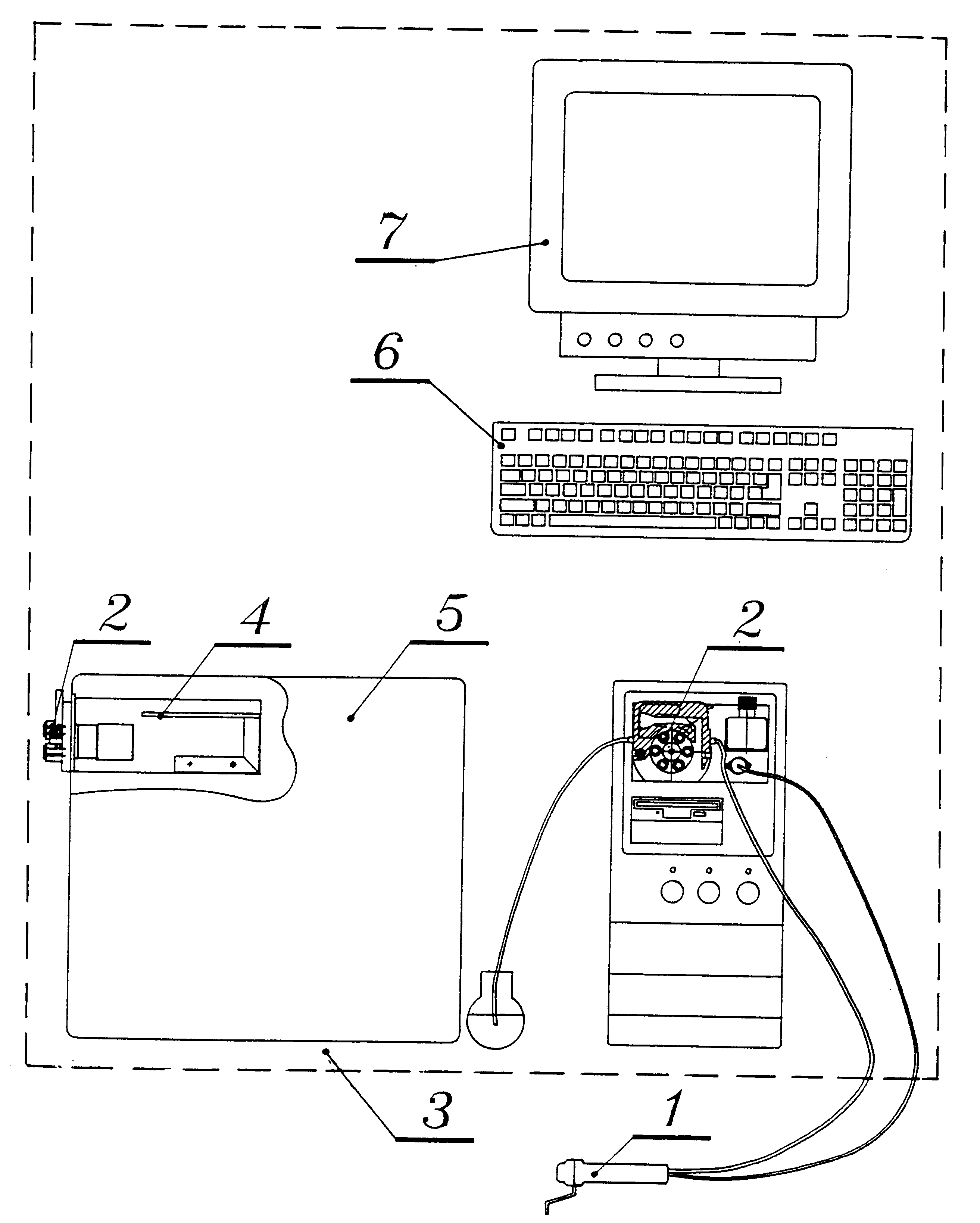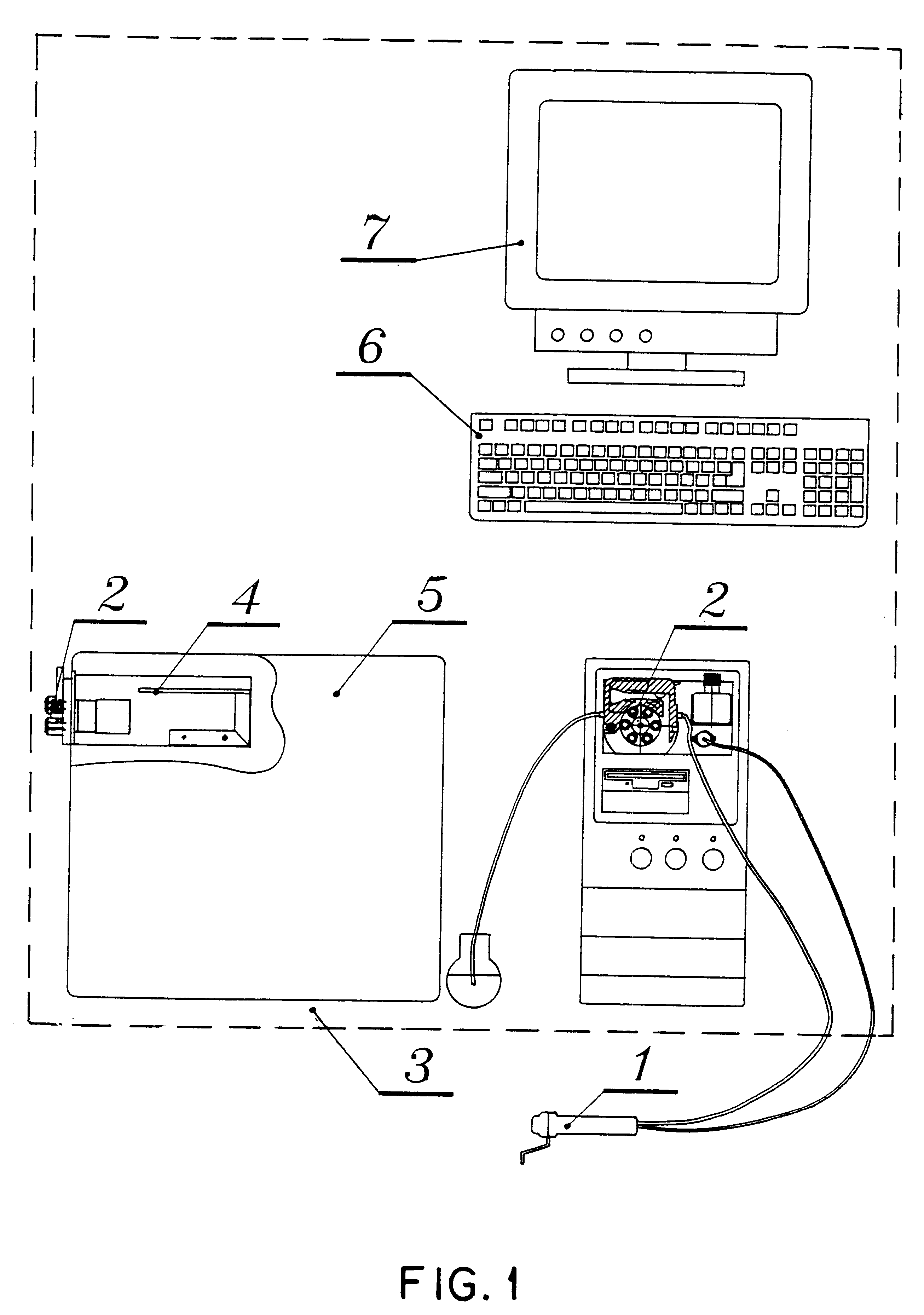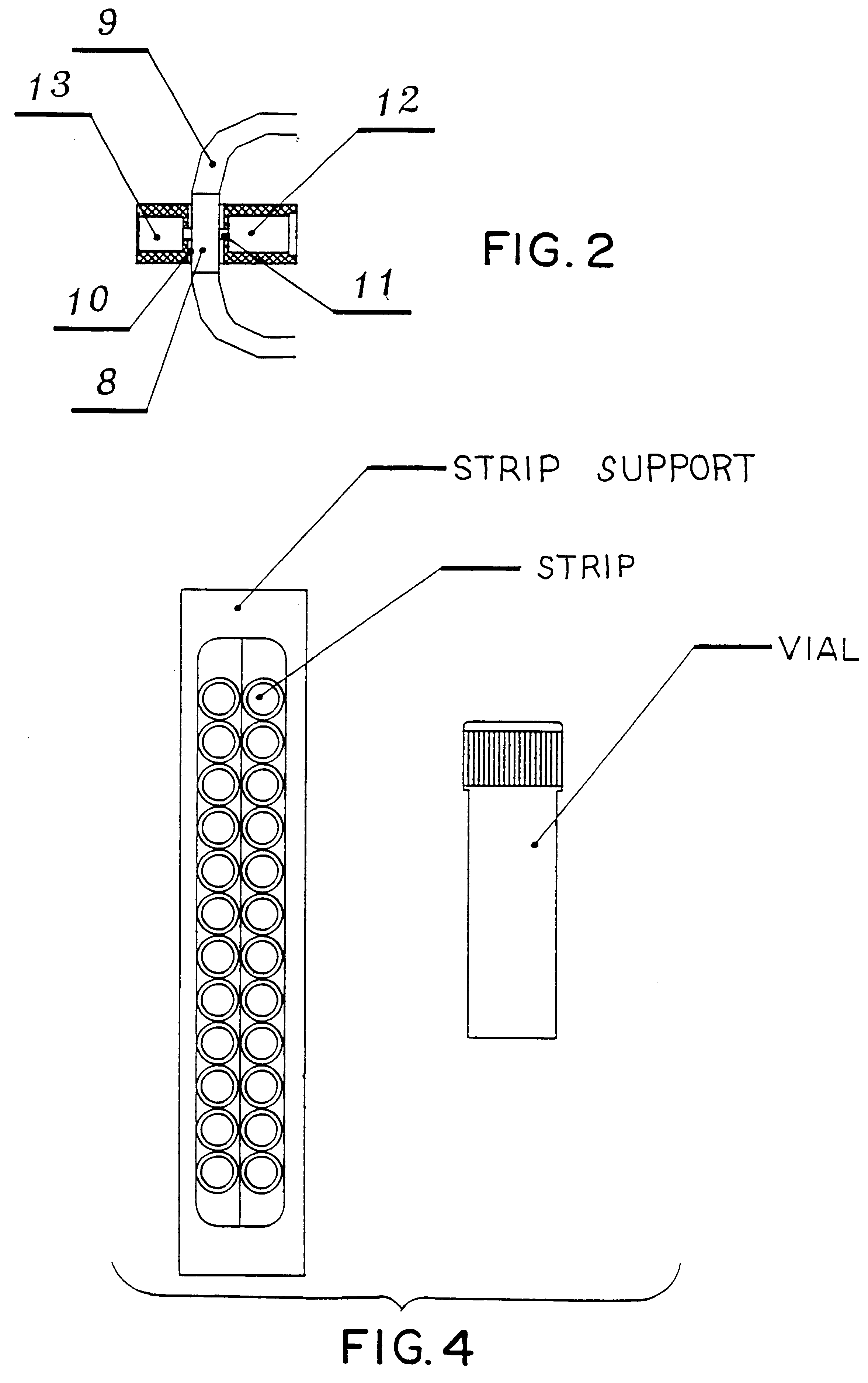Equipment, kit and method for microbiological diagnosis
a technology of microorganisms and equipment, applied in the field of equipment, kit and method for microorganism diagnosis, can solve the problems of not analysing impure samples, changing the measured signal, and difficult routine handling of samples
- Summary
- Abstract
- Description
- Claims
- Application Information
AI Technical Summary
Benefits of technology
Problems solved by technology
Method used
Image
Examples
example 1
Turn on the equipment:
15 minutes before starting a reading, turn on the equipment. After the computer is activated, the auto-execution program goes directly to the program designed for the execution of all process; in this way initially, it will test the existence and integrity of the database and check functioning capacity of each one of measurement module components: sensor, inoculum calibrator and peristaltic pump. Also, it will check electronic key existence that is coupled to a parallel port of the computer. The program will inform about any mistake detected in any of system elements and will disable related options. If a database had not been created, it will be created if the user makes this decision. If there is no database, it will be created if the user decides to do it.
example 2
Sample preparation for uroculture tests:
Uroculture is a well known test, used to screen urine samples for infection.
Procedure starts by measuring optical density immediately after vials have been inoculated (T0h), followed by a second measurement 4 hours after incubation (T4h).
The measurement is made photometrically by using an inoculum calibrator. The following steps show the entire procedure:
1. A 4.5 ml sterile culture medium vial is inoculated with 500 .mu.l of urine.
2. Initial turbidity is measured in McFarland units, using the inoculum calibrator (T0h).
3. Sample is incubated at 37.degree. C. for 4 hours after which the equipment emits a sound alarm for each sample.
4. A measurement of turbidity of inoculated vial is made after 4 hours of incubation (T4h), and according to the level of detected increase, samples are classified as positive, negative or doubtful. In the last case, the sample should be checked after one additional hour of incubation. Also patients with antecedents o...
example 3
Procedure for antibiogram:
For antibiogram, strips of 12 to 24 microwells are used. The first two are for positive (C+) and negative (C-) controls, respectively; antibiotic discs are placed in the other microwells.
Strip inoculation is done by sample distribution in the first microwell and in those with antibiotic discs. The second microwell is filled with sterile culture medium.
PUM
 Login to View More
Login to View More Abstract
Description
Claims
Application Information
 Login to View More
Login to View More - R&D
- Intellectual Property
- Life Sciences
- Materials
- Tech Scout
- Unparalleled Data Quality
- Higher Quality Content
- 60% Fewer Hallucinations
Browse by: Latest US Patents, China's latest patents, Technical Efficacy Thesaurus, Application Domain, Technology Topic, Popular Technical Reports.
© 2025 PatSnap. All rights reserved.Legal|Privacy policy|Modern Slavery Act Transparency Statement|Sitemap|About US| Contact US: help@patsnap.com



